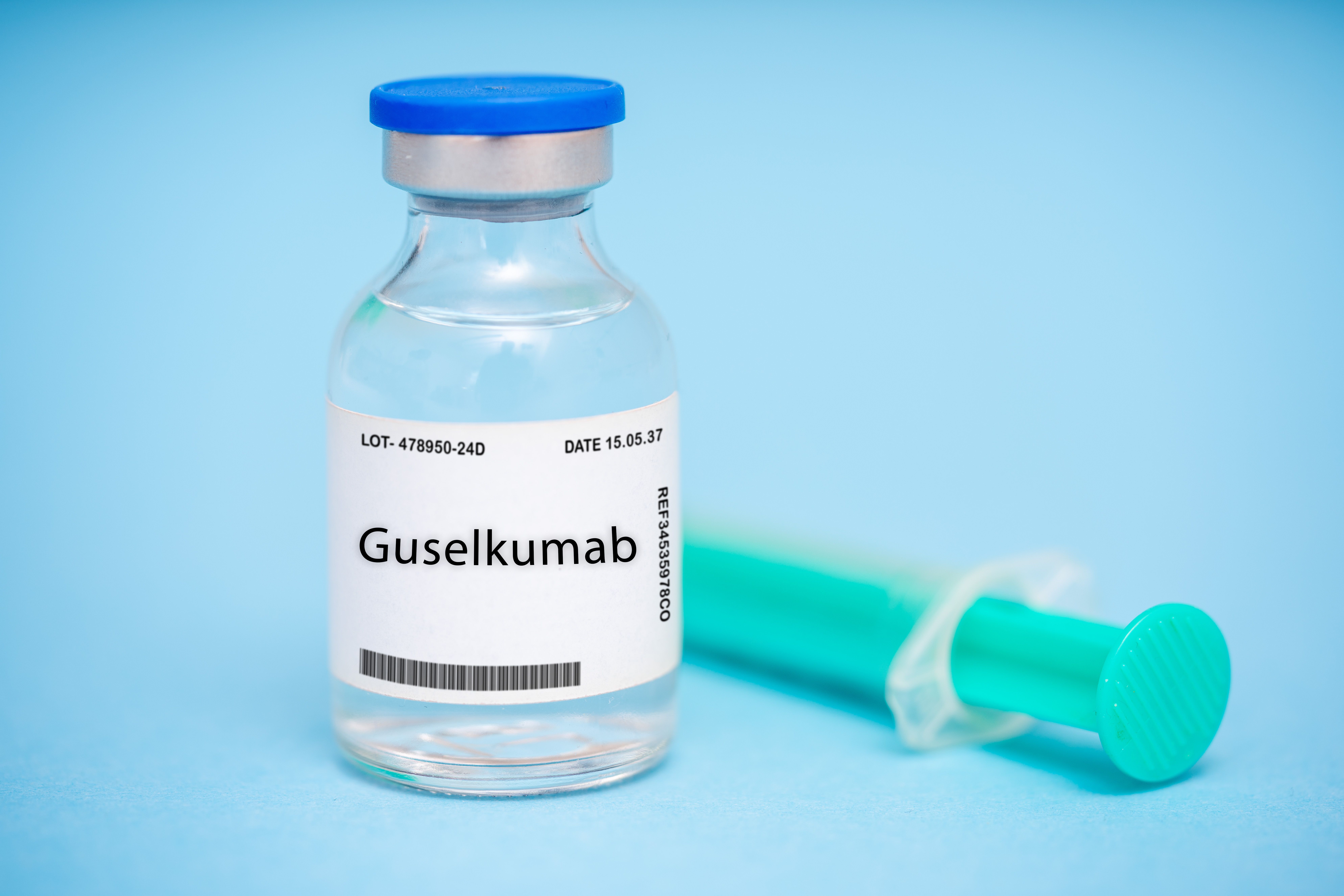Video
NCCN Guidelines for Newly Diagnosed MM
Keith Stewart, MB, ChB: Let’s move on to the second part of the discussion today, which is again to dig a bit deeper into our treatment of a newly diagnosed patient. What are in the NCCN [National Comprehensive Cancer Network] guidelines for the treatment of newly diagnosed multiple myeloma, Andrzej?
Andrzej Jakubowiak, MD, PhD: The guidelines are generated based on mostly category 1 evidence, which is data coming from randomized phase 3 trials. Fortunately, our members of NCCN are very much open to accepting emerging therapies. So they incorporate, usually in category 2A with good evidence from single-arm trials, recommendations for selection of some of the regimens we discussed earlier today. In fact, neither RVd [lenalidomide/bortezomib/dexamethasone] or KRd [carfilzomib/lenalidomide/dexamethasone] have met this level of evidence, level 1 evidence. But that’s eventually guidance, to some extent.
Keith Stewart, MB, ChB: So is VRd [bortezomib/lenalidomide/dexamethasone] not level 1, based on the SWOG trial?
Andrzej Jakubowiak, MD, PhD: It is already level 1, but it is not yet, to my knowledge, approved by the FDA as a regimen. So that’s sort of a little bit of a….
Keith Stewart, MB, ChB: You were telling me earlier that you find that reimbursement, if it’s on the NCCN guidelines list, you’re usually covered.
Andrzej Jakubowiak, MD, PhD: Correct. If there is a more controversial choice at any point of the treatment, and we are asked to discuss with the payer whether this regimen is really acceptable at this time or experimental, and we have a lot of pushback and statements that they are too experimental, then usually it is the argument that this regimen is not in NCCN guidelines and...not published yet. So these are the layers of filtration from payers and to getting the selection.
Keith Stewart, MB, ChB: Rafael, we talked a little bit earlier about the drugs that are being used, but what is your frontline regimen of choice, so doublet, a triplet, elderly, frail; why in both cases?
Rafael Fonseca, MD: Sure. With the exception of the very elderly or frail patient, I always use a triplet. And I think my choice is now dictated by the recent clinical trials. So, for non-transplant-eligible patients, the majority of them are going to get a combination of daratumumab/lenalidomide, and dexamethasone, which I’m already doing in my practice. I do scratch my head a little bit with a high-risk patient who’s elderly.
Keith Stewart, MB, ChB: Now, you say you’re already doing it. We’re expecting approval any day now, but you’ve been able to get it?
Rafael Fonseca, MD: I have so far. We haven’t had problems with that aspect of it. The question although is what to do for the high-risk patient. The confidence intervals are right there, so it doesn’t appear to be any different. But the ALCYONE trial didn’t show, which tested the use of bortezomib frontline, benefit as well. So I still don’t think we know perfectly how to treat high-risk in the elderly. Fortunately, it’s a small minority of patients. It’s about 10% of patients in the elderly. In the transplant-eligible patients, my standard now is a combination of carfilzomib/lenalidomide, and dexamethasone, usually for about 4 cycles and then move on to stem cell transplant.
Keith Stewart, MB, ChB: Mary, a patient perspective, we covered it a little bit earlier. But do you see preference for triplet or doublet therapy or one drug class over another? Are people worried about toxicity, or is that not important to them initially?
Mary E. DeRome: Certainly patients are worried about toxicity. Again, some patients really want to hit the disease as hard as possible and they’re not as worried about toxicity. Whereas, others are really more interested in maintaining some quality of life, so they may accept something that maybe has less toxicity for them.
Keith Stewart, MB, ChB: What about transplant, how do patients react to transplant? Are they still nervous or are they mostly accepting it?
Mary E. DeRome: I think that there’s this sort of new generation of patients who are actually beginning to question upfront transplant. And there is a lot of data emerging that some of these newer therapies that we have available are so effective that patients are, in some cases, electing to delay their transplant. They’re collecting cells, but they’re delaying the transplant.
Keith Stewart, MB, ChB: You think that’s a good thing?
Mary E. DeRome: I think that the jury is still out on that.
Keith Stewart, MB, ChB: The SWOG trial was a large phase 3 trial, not SWOG trial, it was the French that did it. I forgot what they call it.
Andrzej Jakubowiak, MD, PhD: IFM 2009.
Keith Stewart, MB, ChB: OK, thank you. It was VRd [bortezomib/lenalidomide/dexamethasone]/transplant versus VRd [bortezomib/lenalidomide/dexamethasone] alone. It did show substantial ongoing benefit to transplant. Has that impacted your practice at all, Rafael?
Rafael Fonseca, MD: Not really. I still think that for most patients, transplant is still a good option. There is a subset of patients who have very deep responses who may have personal circumstances or preferences that would opt out of transplant, which I actually respect and support if they want to do that. But everything else being equal, I think most patients need to go to transplant. Maybe we’ll talk more about the FORTE study, too, that is being presented.
Keith Stewart, MB, ChB: Thank you for that intro because I was going to go right there, actually. So the FORTE trial, which is a very interesting trial, is being presented at this meeting. This is trial of KRd, your favorite regimen, carfilzomib/lenalidomide/dexamethasone, continuously versus the same regimen interrupted to do a transplant. Tell us what that’s showing so far, Andrzej.
Andrzej Jakubowiak, MD, PhD: We will see the presentation, but from the abstract and previous presentation at least from this study, there are 2 main observations. First, that [carfilzomib/lenalidomide/dexamethasone] is superior statistically compared to KCd. C stands for cyclophosphamide.
Keith Stewart, MB, ChB: That’s right, there’s a third arm on that trial.
Andrzej Jakubowiak, MD, PhD: And both groups of patients receive exactly the same treatment, 4 cycles before, 4 after transplant, and transplant in middle. And there was a third arm, [carfilzomib/lenalidomide/dexamethasone] for 12 cycles with patients collecting stem cells but not receiving transplant. To some extent, surprisingly, the difference in depths of response and in the level of the deepest responses was very comparable between 2 arms, indicating that possibly you don’t need transplant if you extend [carfilzomib/lenalidomide/dexamethasone]. This was the 12 [cycles], longer, so 4 cycles more. But from the abstract, and we need to see the details, it appears that the group of patients who have potentially increased risk, there is a prolonged duration of remission if you incorporate transplant into the treatment strategy, which is in line with what we have previously seen with [carfilzomib/lenalidomide/dexamethasone]/transplant/[carfilzomib/lenalidomide/dexamethasone] followed by [carfilzomib/lenalidomide/dexamethasone] without....
Keith Stewart, MB, ChB: We were all quite excited at the ASH [American Society of Hematology] meeting that this was the beginning of the end of transplant if you could give [carfilzomib/lenalidomide/dexamethasone] for 12 months without a transplant. But it looks like that’s beginning to slip now and transplant is still…is that your interpretation of the abstract?
Rafael Fonseca, MD: Well, as we both know that statement, if true, is not because of what’s reported, just because the numbers are small, so it needs to be validated. The data would suggest that the early relapse is prevented by transplant. So the question is, is a CR [complete response] the same as a CR? In other words, is the CR of transplant different from the CR that we get from other treatments? Historically, we know that patients can go into a CR that’s very long-lasting without anything else after transplant, which is less common with the medication. So I think that’s why this study needs to mature as fast as possible. Of course, everyone is going to see whatever they want to see. So transplanters will say, see, they’re relapsing. Non-transplanters will point out that, in fact, we may be getting closer to eliminating transplant from myeloma treatment.
Keith Stewart, MB, ChB: Do you think with daratumumab, we’ll get there? We never really said earlier. Maybe let me take a step back. Why [carfilzomib/lenalidomide/dexamethasone] and not VRd [bortezomib/lenalidomide/dexamethasone]? There’s no evidence it’s any better. Andrzej, why are you using [carfilzomib/lenalidomide/dexamethasone]?
Andrzej Jakubowiak, MD, PhD: There’s no absolute evidence from randomized trials. Two studies are in progress. One, very advanced, ECOG.
Keith Stewart, MB, ChB: Why are you using [carfilzomib/lenalidomide/dexamethasone]?
Andrzej Jakubowiak, MD, PhD: Well, indirect data from studies reported to date, and not only 1 but for [carfilzomib/lenalidomide/dexamethasone], 3 or 4 studies indicate that respective landmarks of activity of regimen are superior for [carfilzomib/lenalidomide/dexamethasone] versus [bortezomib/lenalidomide/dexamethasone], both response rate, depths of response, and duration of response.
Keith Stewart, MB, ChB: We’ll maybe come back to dosing schedule later. You’ve switched to [carfilzomib/lenalidomide/dexamethasone] recently, too, I think.
Rafael Fonseca, MD: The reason I switched is a story. We have many grateful patients who come to the clinic, say, “Doc, thank you for everything you’ve done for me. By the way, I still don’t feel my feet.” And that is still with a weekly subcutaneous administration of bortezomib. And it’s a trade-off. So it’s peripheral neuropathy versus the risk of increased cardiac toxicity. From what we understand, it’s a little bit less common in frontline.
Keith Stewart, MB, ChB: What is less common?
Rafael Fonseca, MD: Cardiac toxicity associated with carfilzomib. And from what we can tell, also a large part of it is reversible. Now, we do have a phase 3 clinical trial that is going to be reported in the near future, E1A11, that will compare [carfilzomib/lenalidomide/dexamethasone] versus [bortezomib/lenalidomide/dexamethasone]. But I think given that patients are going to live for years, I really don’t want to see that long-term peripheral neuropathy as part of their baggage.
Keith Stewart, MB, ChB: It’s fair to say though that [bortezomib/lenalidomide/dexamethasone] remains a sort of backbone in much of the country, outside of academic centers.
Rafael Fonseca, MD: That’s the perfect choice, of course.




